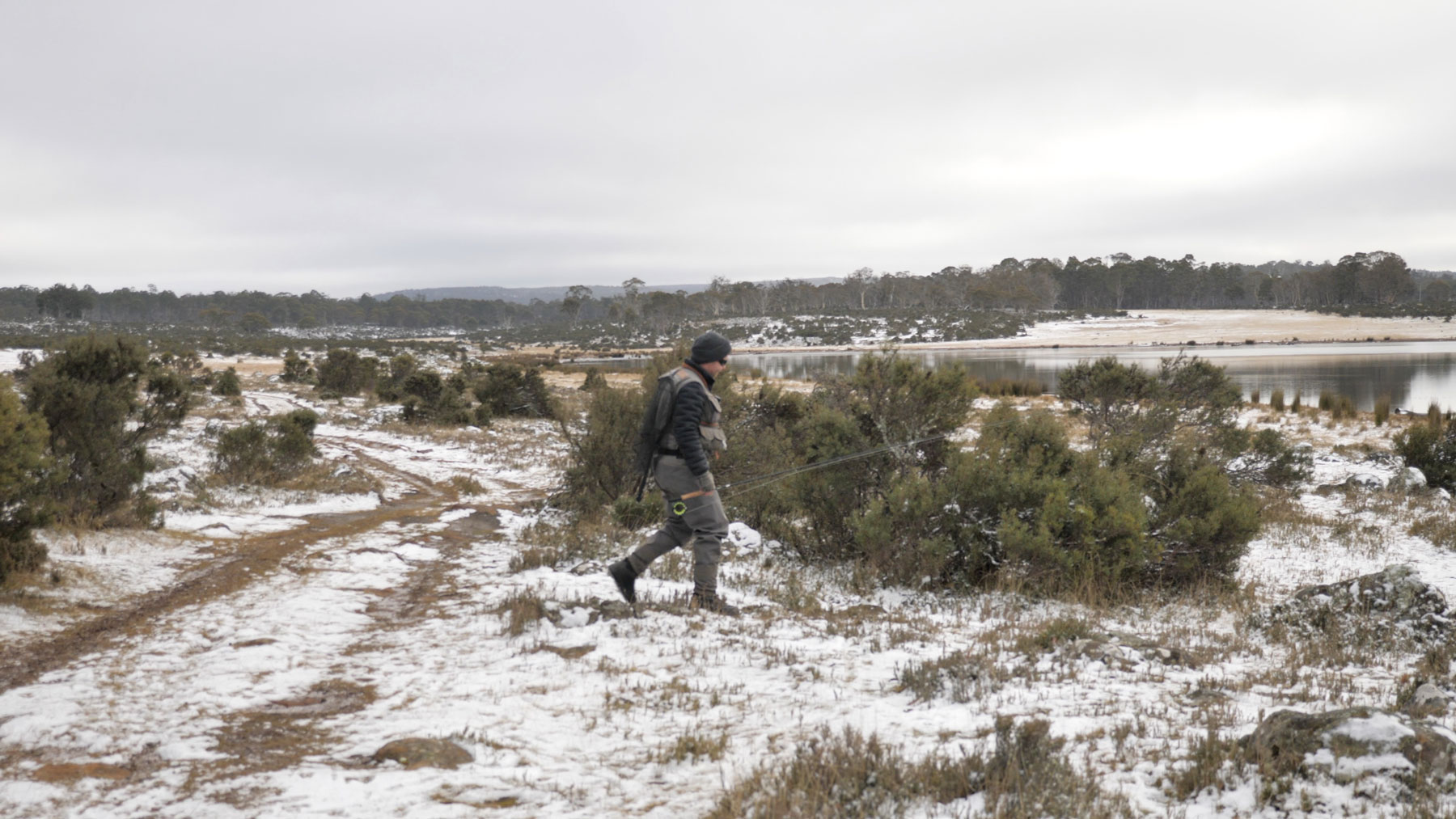Exploring one of the most sought after and elusive occurrences when fly fishing in Tasmania.
In fly fishing, the term 'tailing' describes a trout seen in shallow water, feeding sub-surface with their tail breaking the surface of the water as they forage for a range of food sources.
Generally focused on small aquatic insects and invertebrates, these fish gain a reputation of being extremely hard to catch as presenting a fly in exactly the right place at exactly the right moment is the requirement for success. This occurrence is one that many fly fishers seek when trout fishing in Tasmania as it provides an unforgettable sight fishing experience.
There are a few elements to achieving success with this heart-stopping method of fly fishing, and the next couple of months in Tasmania's trout fishing season provide optimum conditions to experience it with high water levels and a sudden abundance of food sources as water temperatures increase, triggering a start to the life cycle of many small aquatic animals that trout prey on.
What to look for when targeting tailing trout in Tasmania?
To have the best chance of success when heading out to target tailing trout in Tasmania, anglers should look for flooded margins on still waters, found around many highland lakes and lagoons, and flooded plains of lowland rivers. This provides ideal habitat for the trout to cruise and fossick in areas usually not covered by water, as lake levels recede throughout the trout fishing season.
What is the best gear and technique to use?
Typical set up for this style of trout fly fishing in Tasmania is a 5wt 9ft rod, paired with a weight forward floating line. Leaders should be at least 12ft in length and I prefer 5X in flourocarbon.
Fly selection will vary but generally size #14-#16 flies are a good starting point in patterns such as red tag, fiery brown bettle, black and peacock, woolly worm and stick caddis all work well for innate and static presentations, whilst small wet flies such as fur flies are successful when moving your fly.
A stealthy approach is vitally important once a trout is sighted as these fish will detect any movement from the bank and head to deeper water immediately. Lower your profile and get into a good casting position where the trout can't see you. Flies should be presented quite closely to the trout, as they often detect the fly landing and rush over to take it. Once you have fooled the trout into eating your fly, ensure a good hook set and hold on!




